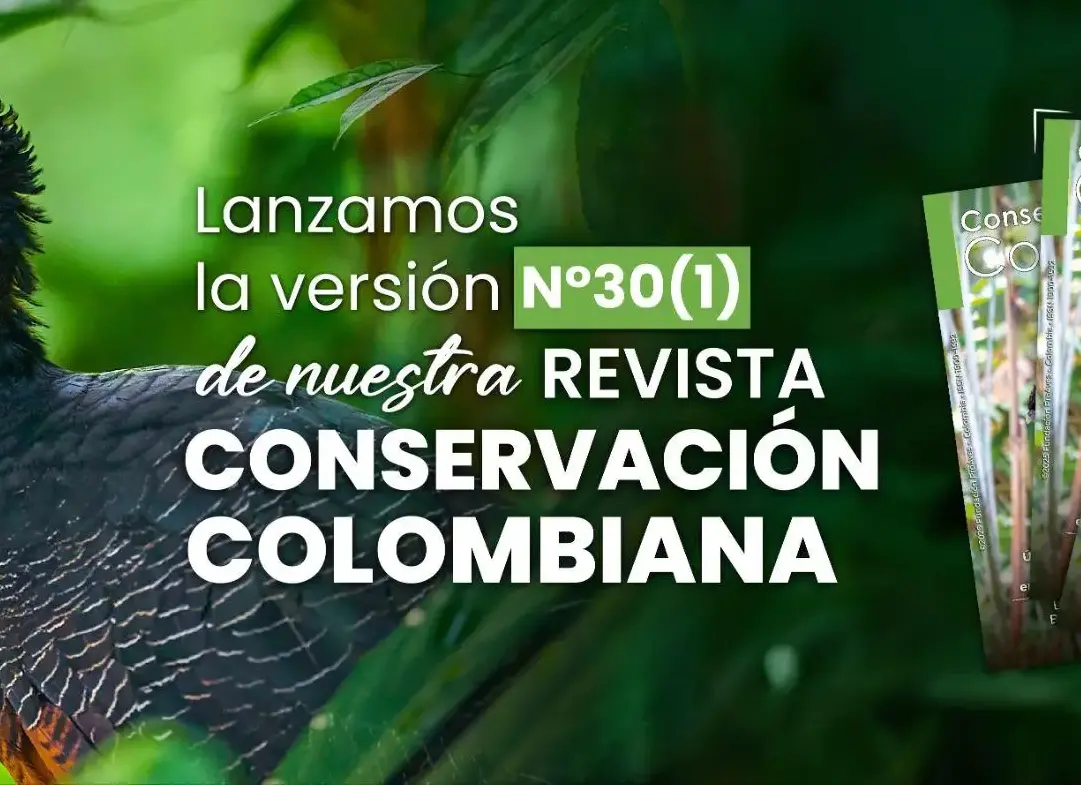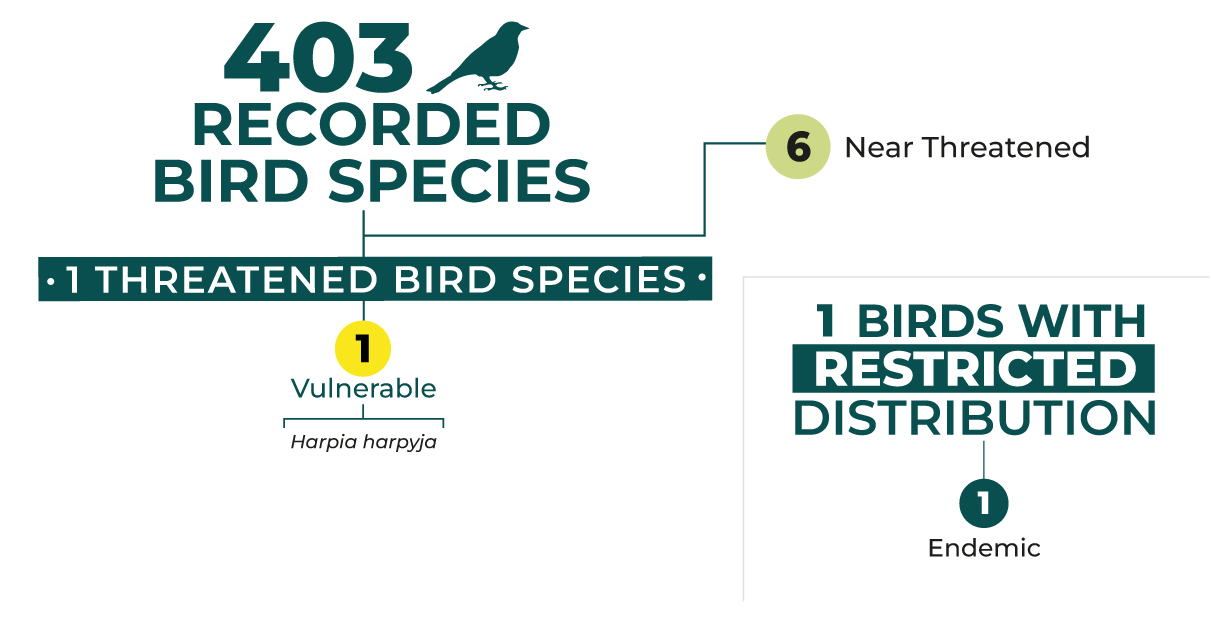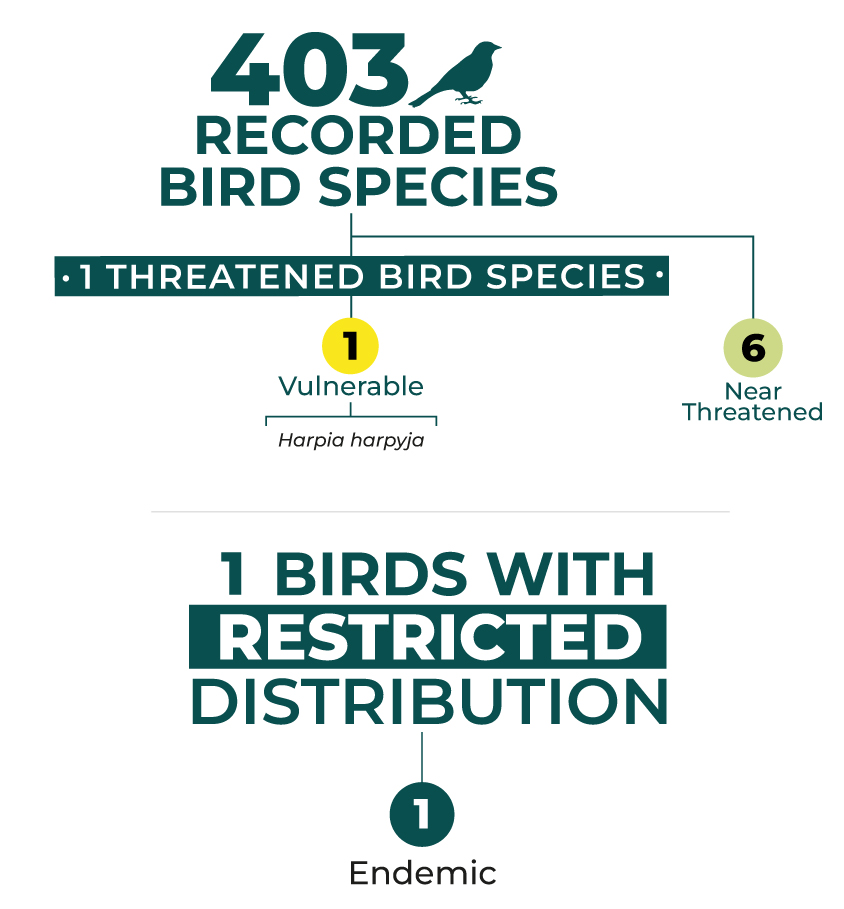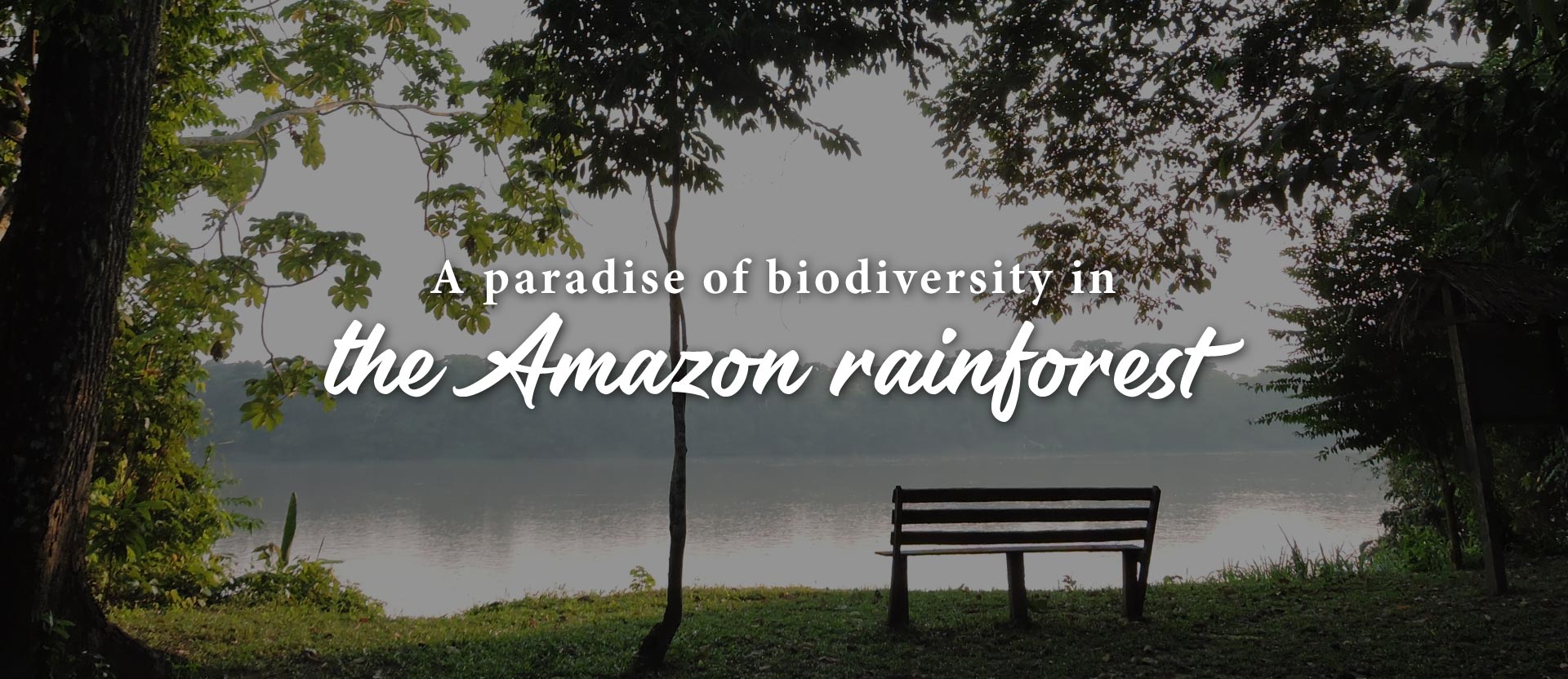
PLEASE CONSIDER THE FOLLOWING RECOMMENDATIONS:
RESERVATION
Make your reservation 24 hours in advance.
Walk-in reservations are not guaranteed and are dependent on current availability.
Fundación ProAves – por la conservación en el país de las aves

This conservation area of the ProAves Foundation was created in 2013 to protect and conserve the habitat of the most threatened species in the region.
A large number of species that are easy to observe live in the Natural Reserve, making it of great interest for conservation.
Visit us!

Savannah, gallery forests, and swamp forests

Tropical humid forest

25-26° C

Warm humid

Between 173 and 205 meters above sea level.
In this conservation area, close to:

In this conservation area, close to:

The Natural Reserve has 3 access routes:
Take a boat from the San José del Guaviare dock to the Mapiripán dock. You can ask the driver to drop you off directly at the ProAves El Jaguar Reserve. The trip takes approximately 2 hours. The boats leave every Friday at 6 a.m.
From the city of Villavicencio take a charter flight. Flights depart on Mondays, Wednesdays and Fridays with the transport company T&A.
You can make your reservation by calling: 314 219 46 71 or 310 277 76 06.
From the city of Villavicencio take a bus to Mapiripán with the company Flota La Macarena. The trip lasts approximately 8 hours. The bus leaves every day at 6:00 a.m.

The most important characteristic of the biodiversity of the Reserve, which makes it of great interest for conservation, is that both the fauna and flora of the Reserve present a high density of species that are easy to observe. Among these species we find the Pink Dolphin. of the Amazon or Boto (Inia geoffrensis), the tapir (Tapirus terrestris VU), the giant river otter (Pteronura brasiliensis EN), the palm anteater (Myrmecophaga tridactyla), the chigüiro or capybara (Hydrochoerus hydrochaeris), the limpet ( Cuniculus paca), the Jaguar (Panthera onca NT), among others.
In addition, about 295 species of birds have been recorded in this conservation sanctuary, among which the following stand out: the Red-breasted Warbler (Granatellus pelzelni), the Amazonian Thrush (Lampropsar tanagrinus), the Spotted Antbird (Hylophylax punctulatus), the Brown Monjita (Nonnula brunnea), the chestnut-rumped curassow (Mitu tomentosum), the white-rumped curassow (Crax alector), the Jamuco (Anhima cornuta) and the slitting guan (Pipile cumanensis), among others.
We recommend a minimum stay of 2-3 nights to enjoy the activities and variety of wildlife.

RESERVATION
Make your reservation 24 hours in advance.
Walk-in reservations are not guaranteed and are dependent on current availability.
CHECK IN AND CHECK OUT
The ProAves Reserve opens at 6:00 a.m. and closes at 8:00 p.m.
Time of entry to your room: From 3:00 p.m. and time of departure from your room: Maximum at 10:00 a.m.
RESERVATION POLICIES
You can change the dates of the reservation, as long as there is availability.
Changes must be requested in writing and 15 days in advance. No refund is made for cancellation.
MEALS
Inform us of any health problems, allergies, or food requirements.
We will offer you a special menu according to your diet.
DO NOT COLLECT
Please, respect the natural resources of the Nature Reserve. The collection of any biological material is not allowed.
TRANSPORT
It’s necessary to travel in a 4×4 vehicle adapted to handle the conditions of some sections of the road.
CLOTHING
Remember that the climate in Colombia can be very unpredictable! We recommend you bring suitable walking shoes, a rain jacket, long-sleeved clothing, a sun hat, and sunscreen.
FLASHLIGHT
In the Natural Reserve there may be power outages, so bring a flashlight and enjoy connecting with nature without the distraction of modern technology.
MOSQUITOES
You do not need a yellow fever vaccine. However, we recommend using repellent since being in contact with nature there may be mosquitoes.
FORBIDDEN TO ENTER ALCOHOL
The entry of alcoholic beverages into the Nature Reserve is forbidden.
INTERNAL TRAILS
Follow the instructions of the Nature Reserve staff and stay on the established trails.
This conservation area of the ProAves Foundation was created in 2013 with the objective of protecting and conserving the habitat of the most endangered species in the region.
The Natural Reserve has a high density of species that are easy to observe, making it of great interest for conservation. 364 species of birds live there, among which are: Picumnus pumilus, Touit huetii, Spizaetus ornatus, Oressochen jubatus, and Lophornis chalybeus, Mitu tomentosum, Hylopezus macularius, Dromococcyx phasianellus, Lathrotriccus euleri and Calidris minutilla.
The forests of the ProAves El Jaguar Reserve present a high diversity of mammals, among which are: Inia geoffrensis, Tapirus terrestris, Pteronura brasiliensis, Myrmecophaga tridactyla, Hydrochoerus hydrochaeris, Cuniculus paca and Panthera onca, among others.
It is made up of gallery and riparian forest, savannahs, Morichales, swampy areas, lagoons, lakes and natural swamps, Dense High Forest of Tierra Firme, Transformed Vegetation (Weeded Pastures), Dense Low Forest of Tierra Firme and Dense High Heterogeneous Flooded Forest : The families best represented in number of species are Mimosaceae, Moraceae, Melastomataceae, Lauraceae, Fabaceae, Euphorbiaceae, Rubiaceae, Burseraceae, Sapotaceae, and Myrtaceae. The species identified at the moment are the following: ax or rib (Aspidosperma excelsum), acaí (Euterpe precatoria), potbellied (Iriartea deltoidea), canangucha (Mauritia flexuosa), monkey ladder (Bauhinia guianensis) and the rebalsero freighter (Eschweilera amazonica) , macaw (Apuleia leiocarpa) three boards (Dialium guianense), carob (Hymenaea oblongifolia), cachicamo (Calophyllum brasiliense), macano (Terminalia amazonia), fariñero (Clathrotropis macrocarpa), sassafras
(Ocotea cymbarum), stubby cedar (Cedrelinga cateniformis), milky cedar (Pseudolmedia laevigata), woolly cedar (Pseudolmedia laevis) and milpo or purple flower (Erisma uncinatum) and short cedar (Curatella Americana).



